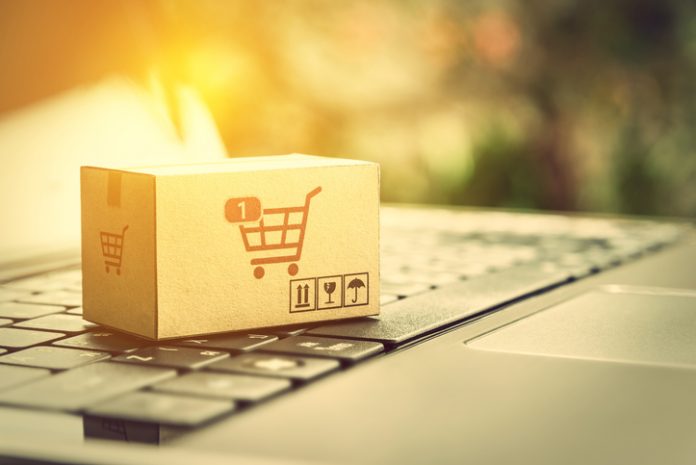The COVID-19 pandemic caught everyone by surprise, and not least the eCommerce world. Brands who had previously seen 2020 as a year of winning suddenly had to revert to it being a year of survival. Indeed, stats have shown that halfway into the year, over 15,000 online stores had already closed, with worldwide restrictions biting hard. Surviving COVID became the main aim for retail stores.
Anxiety began to gnaw as no one quite knew what the rest of the year would bring. Fast forward to 2021, and while there are certainly still things to be fearful of, there’s also lots to look forward to. The eCommerce landscape has changed, perhaps irreversibly, for better – or for worse.
In this article, we’re going to take a closer look at how the COVID pandemic has changed the eCommerce market. We’ll be looking at things to be worried about, and things to be excited about.
Supply Chain Drama
Whether it was expected or not, online sales began to rocket sharply once the pandemic was in full swing. “Unprecedented” became a buzzword, and for many in the eCommerce market it became related to unprecedented sales.
But while skyrocketing sales appear to be a good thing on paper, they brought about supply chain disruption. No one saw such a surge in orders coming and it caught brands and their fulfilment centres unprepared. Stock shortages were commonplace, while production capacity went down.
The problem here is that, while a number of online stores performed well in 2020, many failed to reach their potential because of supply chain drama (as well as the fact that some sectors suffered from a serious drop-off in demand). Moreover, we’re now well into 2021, and supply chains still haven’t recovered, the COVID impact on fulfilment industry is still being felt – which could spell potential disaster for stores who fail to get to grips with the issue.
The key lesson to be learned here is to work with fulfilment centres you trust while at the same time investing in inventory management systems that help to prevent stock shortages. The pandemic isn’t over yet, so it’s important that you find ways of capitalizing on the next surge in demand.
Last Mile Delivery Issues
It’s no secret that last mile delivery issues were beginning to emerge pre-pandemic. But it’s taken a pandemic to cause an actual storm.
Let’s quickly backtrack: Last mile delivery refers to the last leg of the delivery process, a process that begins with the initial customer order and ends with the doorstep delivery.
The prime reason behind last mile delivery issues was always inefficiency because the “last mile” often incorporates numerous stops with small drop sizes.
The problem has – unfortunately – been exacerbated during the pandemic thanks to an increase in online eCommerce orders. The demand for products is there but, as yet, the solution to the last mile dilemma hasn’t arrived.
The problem is even further compounded by the fact that last mile delivery costs make up a huge percentage of the total cost of shopping. And because so many eCommerce stores feel the need to offer free shipping to their customers, they themselves by and large need to foot the last mile cost.
And while this is a worry for eCommerce stores that are already feeling the strain, the light at the end of the tunnel could lie with technological solutions that will boost the last mile by connecting retailers with non-professional local-based couriers. This is something to get a bit excited about.
Greater Investment
AdSpend was expected to decrease in 2020 as a result of the ongoing pandemic, but advertising on Amazon has rocketed as the online retail giant strengthened its position amidst the chaos. Owing to the increased demand, Amazon’s advertising rates have also risen, with sellers spending more on cost per click ads than ever before.
However, the real investment going forward – and the real cause for excitement among online sellers – is that made by brands with larger budgets who now realise the potential of the eCommerce market as a lucrative marketing boon.
According to a recent Global Advertising Trends report, brands are expected to splash almost $60,000,000,000 on eCommerce ads throughout 2021, with investment increasing globally by around 18.3%. This means the eCommerce advertising market is growing at 30 times the rate of the wider digital advertising market.
Brand Experiences Are Becoming The Norm
Pre-pandemic, it was much easier for an online store to be little more than a website that sold products. The common theory was that, the less distractions you gave to your customers, the easier it was to make sales. It didn’t matter whether you are an actual brand or not.
However, COVID has taught us a lot about the need to build communities that are founded on trust and core, common values.
Indeed, research shows that in 2021 that consumers now expect the stores they buy from to espouse values and take action. They want businesses to stand for things, to support things and to put a common purpose first.
This is super exciting. It means eCommerce markets can now focus on creating a unique style and perspective that puts values, community and culture first while creating an entire brand experience that their customers are able to buy into.
Diversification May Be Key
One important observation that came out of 2020 was that, during the peak of the worldwide pandemic, eCommerce sellers on Amazon with 3,000+ listings performed a lot better than those with less than 1,500 listings.
The reason has been pinned on two things:
- Customers were seeking out brands who were able to offer them multiple products in one place
- Sellers with more listings were able to make up for poor sales on some products with high sales on others
The key takeaway here is that eCommerce stores that specialize in one or two niche products may suffer more than those who have diversified and sell a wide range of products. As such, eCommerce businesses can either be worried or excited here. If you’re savvy enough to diversify and mix up your product listings while retaining your brand identity, you can grow your market reach, relieve the pressure, and regulate cash flow better whenever a new bump in the road hits.
Final Thoughts
The coronavirus pandemic taught us all a number of lessons – and especially that of not giving up. Online stores fell by the wayside in 2020, some were pushed to the brink, but others not only survived – they also thrived.
While some of the changes wrought by the pandemic caused anxiety and worry, there’s also lots of things to be excited about. It’s important that you use this transition period to learn lessons, to adapt and adopt, and to implement new growth strategies that will help you overcome future issues.
About the Author

Will Schneider is the founder of InsightQuote, a match-making service for B2B services, and writes informative posts about fulfillment services at Warehousing And Fulfillment. He is passionate about helping businesses find the right solutions to improve their operations. When not working, Will enjoys coaching youth basketball.





![Deconstructing the Myth of Entrepreneurship iStock-2151090098 [Converted]](https://www.europeanbusinessreview.com/wp-content/uploads/2024/09/iStock-2151090098-Converted-218x150.png)





























